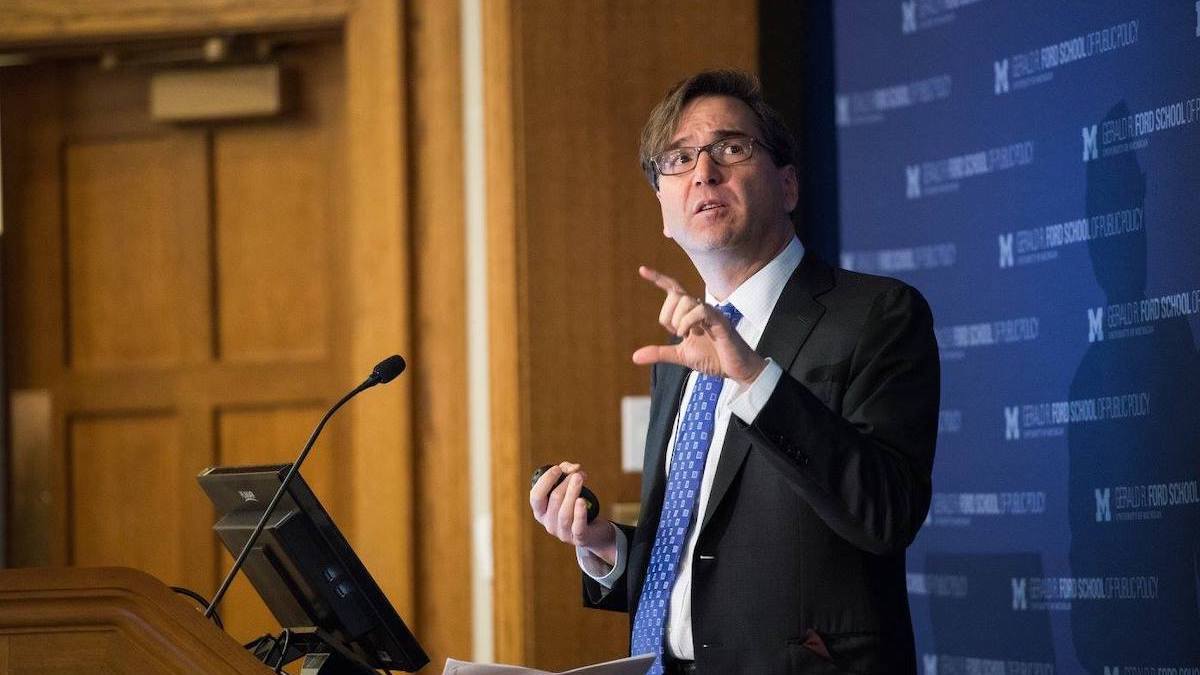Jason Furman, former Obama chairman of the Council of Economic Advisers, and current Harvard economist | Facebook
Jason Furman, former Obama chairman of the Council of Economic Advisers, and current Harvard economist | Facebook
In Racine County and Wisconsin, the rate of inflation is outpacing wage growth, reducing citizen's ability to afford the cost of basic commodities.
According to the U.S. Bureau of Labor Statistics (BLS), wages in Racine County have failed to keep pace with the national average, rising by 5.9% compared to 7.4% nationally in the third quarter 2019-20. Wisconsin ranks 43rd of 50 states in this metric.
As wage growth stagnates, the rate of inflation is inversely increasing at worrying rates. The Bureau's Consumer Price Index (CPI) has reported notable upticks over the past 12 months on items particularly important to average American households: Food (3.4%), energy (23.8%) and used vehicles (+41.7%).
BLS data shows that Racine County's unemployment rate is at 5.6% as of June which is just above the national average of 5.4%, but well below last June's unemployment rate of 8.2%.
People have returned to work and workers are getting paid more, but Jason Furman, former Obama chairman of the Council of Economic Advisors and senior researcher at the Peterson Institute for International Economics (PIIE), said inflation has eaten up all of the wage gains for Americans going back to the Trump administration. In June 2021, real compensation fell 0.7% below the levels of December 2019, and 2% lower than its pre-pandemic trend.
The BLS reports that nominal compensation for all U.S. civilians has risen by a 2.8% annual rate, but at the same time, because of inflated prices, real compensation is down by 2% since before the COVID-19 crisis began, according to PIIE. Prices rose faster than wages, leading to inflation-adjusted compensation falling for the past three months below its December 2019 level.
In an opinion article published by The Hill, author Kristin Tate said there are two significant drivers of the current inflation: “Money printing by the Federal Reserve” and “massive government spending.” Tate calls the growing inflation “Biden’s hidden tax on working Americans.”
"Put it all together, and consumer prices are the highest they’ve been in eight and a half years," Tate wrote in the article. "Economists now not only see the risk of inflation 'higher than in the last two decades,' but the distinct risk of the Federal Reserve having to increase interest rates by the end of 2022."
Tate adds that the Fed nearly doubled its bond purchases since the beginning of the pandemic, adding almost $4 trillion into the economy, almost as much as the Fed purchased between 2008 and 2014, during the worst of the Great Recession. The president has requested a 16% increase in domestic spending in next year’s budget.
Authors of the initial $1 trillion infrastructure bill said the bill would be "fully paid for," The Wall Street Journal reported. The nonpartisan Congressional Budget Office (CBO) has since said that the $1 trillion installment of the infrastructure plan would add $256 billion to the federal deficit over 10 years. Members of the bipartisan group that negotiated the infrastructure bill said they expected the analysis from the Congressional Budget Office to differ from their own and said some of the measures to cover the cost of the bill wouldn’t count the same way toward CBO’s official estimate.
Mark Vitner, a senior economist for Wells Fargo’s Corporate and Investment Bank, said current inflation trends are temporary and won’t come close to previous historical periods of inflation, according to The Business Journal.
“We are not likely to see a return of the runaway inflation that we saw in the late 1970s and early 1980s,” Vitner told The Business Journal. “Most of the run up in inflation that we are seeing is due to some temporary supply shortages and bottlenecks in the supply process because one or two key parts are messing, such as semi-conductor chips.”
According to The Economist, BLS reported that annual headline inflation in July again hit 5.4% and that the gauge for used cars shows prices leveled off, suggesting that the inflation scare may indeed prove transitory.


 Alerts Sign-up
Alerts Sign-up